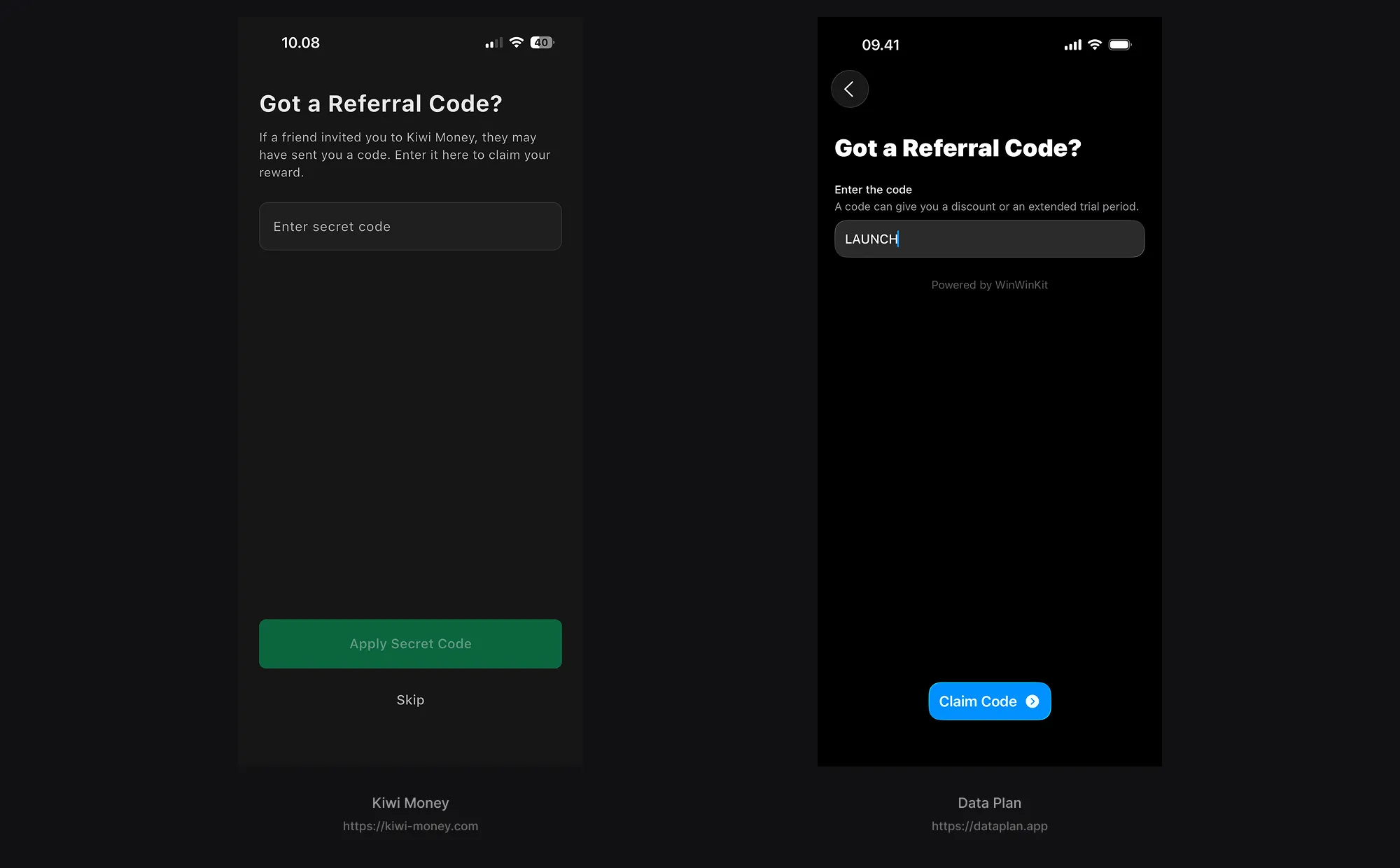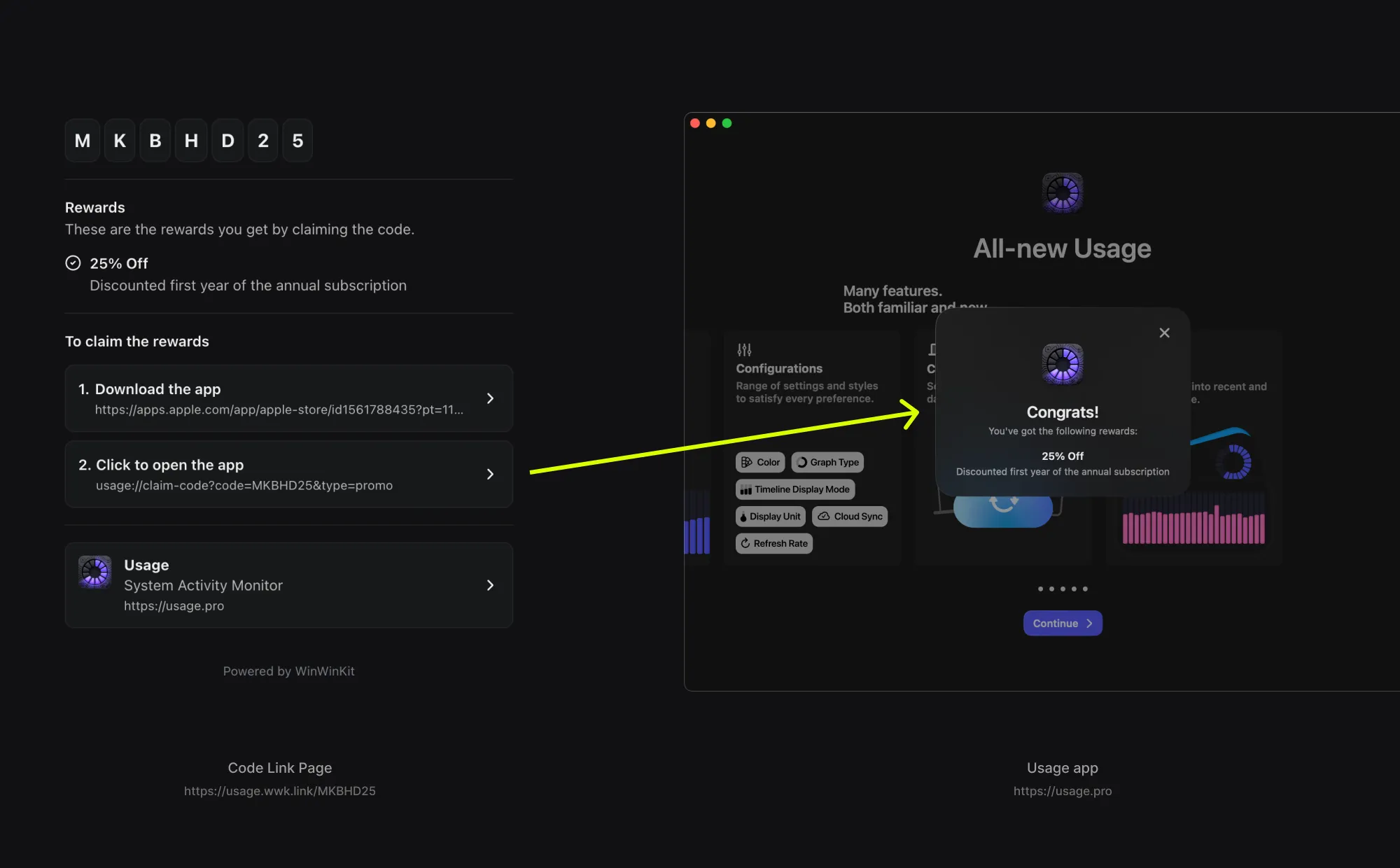User Experience for Claiming Code
Claiming a code is an essential action required for users to receive rewards and be attributed to the right affiliate campaign, referral program, or promo code. Learn more about how WinWinKit solves mobile attribution to understand why it is important and how it works.
Creating a great user experience is important for the success of any app. Letting users claim a code should be seamlessly embedded into your existing user flow.
In this guide, we will cover different options for crafting user experience for claiming codes. Which one to choose is up to you.
You do not need to create different user experience for claiming different types of codes. Implementing it once enables users to claim any code, be it an affiliate, referral, or promo code.
Onboarding Step
Onboarding is a common flow that users go through when they first use an app, and it’s a natural place to let users claim a code. Claiming a code can be a separate step in the onboarding process.
Take a look at how Kiwi Money and Data Plan implement it:

Purchase Screen
Another common place to let users claim a code is on the purchase screen. A simple solution could be to add a “Claim Code” button under the normal purchase buttons, and present a screen for claiming a code, similar to the ones shown above.
Deep-link
Perhaps not so obvious, but deep-linking is a great way to let users claim a code.
There are two options to consider when implementing deep-linking approach:
Navigate to Code Claiming Screen
If claiming a code should be a more exclusive feature and not available by default, you can navigate users to the code claiming screen via a deep-link. When deep-link is recognized, the app can present a screen similar to the ones shown in the Onboarding Step.
Claim Code Directly
By using our Code Link feature, the app can receive and parse the incoming deep-link with a code, and then claim the code without users needing to input anything. In this scenario, it is a good idea to present users with steps reflecting code claiming and success/failure states.
Take a look at how Usage implements it:

Linking Platform
It is not encouraged, but it is still possible to use a linking platform, such as Branch or AppsFlyer. While they are great for tracking attribution at scale, there are challenges when it comes to the fast and accurate attribution necessary for immediate code claiming. Again, learn more about how WinWinKit solves mobile attribution to understand the benefits of using short codes instead of links.
If you decide to go with this approach, you would configure links via those platforms by embedding affiliate or promo codes, handle them via their SDKs, and then pass the code to WinWinKit’s SDK for claiming it and granting rewards for the user.
There is no direct integration between WinWinKit and linking platforms, and as such, it requires some manual work to configure campaigns that you need to work via them. While it can still be done for affiliate and promo codes, it becomes impractical for referral codes.
Examples here are for your reference and inspiration. Ultimately, it is up to you to build an awesome experience for your users.
If you come up with a different way to claim a code, please share it with us!